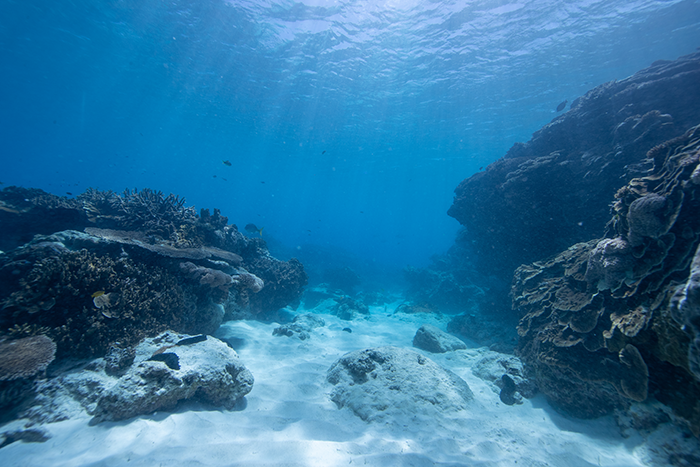Interviews / Ocean
18 March 2025
Deep Sea Mining: 2025, a Strategic and Institutional Turning Point?

Deep sea mining is at the heart of an intense international debate. While some states and companies see it as a strategic opportunity for the supply of critical metals, others warn of the ecological risks and advocate for a moratorium. As the first part of the 30th annual session of negotiations takes place from March 17 to 28 (with the second part in July), the year 2025 could represent a turning point institutionally and strategically for the exploitation of seabeds. In this context, what dynamics are shaping today’s debate and what prospects are emerging for the future of this sector? Insights from Romane Lucq, an analyst specialising in international strategy with a focus on maritime issues.
Why does deep sea mining generate so much interest and controversy today?
Deep sea mining crystallises a debate at the crossroads of economic, strategic, and environmental issues. The main appeal of this mining lies in the presence of strategic mineral resources in the deep sea. Among these, polymetallic nodules—small rock formations that naturally form on the seabed over millions of years, rich in nickel, cobalt, copper, and manganese—garner particular interest, especially for the green technology industry. In a context of rising global demand for critical metals, fuelled by the growth of renewable energies, electric vehicles, and digital technologies, these deposits appear as an alternative to terrestrial mines, which are often associated with geopolitical tensions, significant environmental impacts, and a concentration of supply among a few dominant countries.
However, this economic promise faces numerous scientific unknowns and increasing opposition from environmental actors. Unlike terrestrial ecosystems, the deep sea is still poorly explored, its biological dynamics are poorly understood, and the resilience of its ecosystems to disturbances is uncertain.
Moreover, beyond economic and environmental aspects, deep sea mining raises diplomatic and regulatory tensions. The majority of mineral resources are located in international waters and are thus regulated by the International Seabed Authority (ISA), a specific UN body. However, the lack of a clear framework on the granting of mining licenses and disagreements between states slow down the adoption of a mining code, the subject of the ISA’s annual negotiations.
What are the main economic and legal issues currently shaping the debate?
Economically, deep sea mining is seen as a potential response to the growing demand for strategic metals and could represent a lever for diversifying global supply. However, while some results seem to validate the technical feasibility of extraction, uncertainties remain over its economic viability. It requires expensive and complex technologies (underwater robots, specialised ships, adapted processing systems, etc.) and no commercial project has yet proven profitable. Additionally, the absence of a clear legal framework hampers investments, and companies are reluctant to engage in a sector where rules could change rapidly.
From a legal standpoint, the ISA has only issued exploration contracts, and no commercial exploitation permits have been granted so far. Indeed, the granting of exploitation licences is conditional on the prior adoption of a mining code setting binding rules to regulate these activities, and debates remain heated over several thorny points of the future mining regime: environmental standards, benefit-sharing systems (in accordance with the principle of the common heritage of humanity that governs the mineral resources of the international seabed), liability in case of ecological damage, modalities for monitoring and enforcing rules, etc.
Faced with the uncertainties surrounding this emerging industry, how are different actors positioning themselves?
Deep sea mining deeply divides the international community, and the uncertainties surrounding its development have led to a fragmentation of positions between actors. On the state side, there is a strong geopolitical divide. On one hand, a growing coalition of countries advocates for caution and 32 of them have joined a moratorium on deep sea exploitation, calling for a halt to all mining projects pending further scientific knowledge. France has particularly stood out on this issue by declaring in November 2022 its support for the ban on all deep sea mining. On the other hand, some states hoping for economic or strategic gains are in favour of rapid exploitation and advocate for opening the market. Among them are mainly states holding exploration contracts through national companies, but also small Pacific island states with mining interests, such as Nauru or Tonga, who defend the launch of the industry as they see it as a potential source of revenue and development. This divide between “pro” and “anti” exploitation states leads to tense negotiations and makes it difficult to reach a consensus.
The game of actors is also contrasted at the level of companies and investors. On one side, several companies have positioned themselves very early to claim the first exploitation permits, led by The Metals Company (TMC), which announces having finalised its technical dossier to exploit the nodules from 2026. On the other hand, an unprecedented movement brings together mineral-using companies that commit in favour of a moratorium. This stance aligns with the call from several international financial institutions not to finance submarine mining projects without a robust environmental framework. Thus, there is a fracture within the private sector itself.
Finally, numerous environmental NGOs are campaigning and multiplying alert reports and awareness-raising actions among the general public and leaders, while highlighting recent scientific reports underlining the potential impacts on ecosystems.
The ISA itself is at the centre of the game: both a regulator and guardian of this common heritage, it is criticised by NGOs for its lack of transparency and accused of being too receptive to mining interests, while also being challenged by industrialists for the slowness of its decision-making process. It is therefore the multilateral influence game that unfolds in diplomatic arenas that will determine the future of the deep sea for the decades to come.
In what way could the year 2025 mark a turning point?
The year 2025 looks decisive for the future of deep sea mining, with several institutional and strategic deadlines that could determine whether it materialises or is slowed down by a desire for stricter regulation.
Firstly, Leticia Carvalho, a Brazilian oceanographer and diplomat, has been appointed Secretary-General of the ISA to succeed Michael Lodge, whose mandate was marked by an approach favourable to the opening of exploitation. Her arrival could signal a shift in the governance of the ISA, with greater consideration of environmental concerns and issues of equity and inclusion. However, the ability of the Secretariat General to influence the dynamics will depend on the balance of power between member states within the Council and the Assembly of the Authority.
This year also represents a deadline in the negotiation process: under pressure from the countdown triggered by Nauru, the ISA developed a roadmap in 2023-2024 intensifying the negotiations of the mining code to be able to formally adopt it in 2025, but given the persistent tensions, a compromise may be difficult to find within the allotted time.
Furthermore, TMC has already announced, “in consultation with Nauru”, its intention to file an exploitation application in late June 2025, aiming for the start of commercial production from 2026, which creates additional pressure for the ISA.
There is therefore, in a sense, a sense of urgency, as several observers within the ISA warn that a hastily reached agreement in 2025 could result in incomplete or overly permissive regulation, unable to prevent ecological damage.
For further reading, see also: Emmanuel Hache, Émilie Normand, and Candice Roche, “Exploiting the seabed: a new geopolitical frontier?” International and Strategic Review 136, no. 4 (winter 2024): 173-83.

